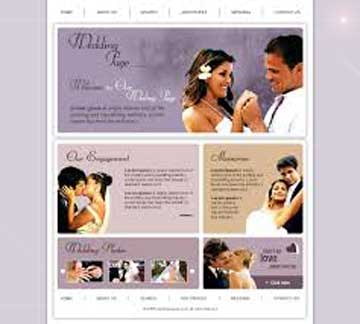Take A Picture Already – Creating A Photo Website
 Judging from the expanding popularity of online photo sites, the vast majority of photographers are choosing photo Websites as a starting point. Many photo Websites offer free or nearly free Web storage and online albums. Some sites provide the space as part of the cost of processing, printing and scanning customers’ film. Others provide it entirely free of charge, making their money from advertising. With easily followed menus and guides, creating online albums couldn’t be easier.
Judging from the expanding popularity of online photo sites, the vast majority of photographers are choosing photo Websites as a starting point. Many photo Websites offer free or nearly free Web storage and online albums. Some sites provide the space as part of the cost of processing, printing and scanning customers’ film. Others provide it entirely free of charge, making their money from advertising. With easily followed menus and guides, creating online albums couldn’t be easier.
There are a couple of things to remember before putting a Website together. First, make sure images are stored in the JPEG file format. (GIF will also work, but JPEG is preferred for imaging.) JPEG file compression is one of the best tools for keeping image size within reason. Finally create a folder or directory on the computer’s hard drive that contains the images to be uploaded. That makes it easier to organize the online album when the site asks for the location where images are being stored.
The actual process of registering and uploading images is remarkably easy. It’s pretty much the same for many of the major photo sites. During registration, most sites ask for the customer’s e-mail address and the password that’s going to be used to access the site. Some sites have separate passwords for the photographer who took the pictures and people who were invited to view the images. With others, viewers don’t need a password. Usually the sites have room for 10 to I 6 shots per page. It’s a simple matter of following the step-by-step instructions on the screen to upload the images to the site.
Some sites store the images in a default online folder, where they can be sorted by topic and put into custom folders. Others place the images into a single folder. Once stored, the image size, orientation and, in some cases, image brightness, can be changed. Some sites also make it possible to add frames or generate postcards and other custom photo products.
While the commercial photo sites work well enough for most photographers, some serious photographers prefer to build their own complete Website. The latest generation of Web-authoring tools has opened the door for just about any photographer with Internet access to create distinctive photo Websites from scratch. With the new software tools. programming skills are no longer needed, but design skills are still important. Commercial Web-authoring programs usually have templates that serve as a good starting point.
All well-designed Websites share several common features. They all give viewers things to do. They present them with choices they have to make. It’s a little more interactive a process than simply reading a magazine. But, in some respects, such as organization, viewing a photo Website should be like thumbing through a photo magazine The opening page should contain a table of contents with links to each section. Give viewers the choice of skipping around the site, Don’t force them to scroll from page to page until they get to the images they’re interested in viewing.
Well-designed Websites provide navigational tools that are easy to follow. Never make the user have to figure out how to move around the site. One way to do that is to always include specific visual elements on every page of the site. That means using the same navigational buttons in the same screen location with the same graphics on every page. Consistency in design makes it easier for viewer to navigate throughout the site. Besides assisting navigation, using standard design elements on each page also reinforces Website identity.
Once the overall concept has been created, make the site as readable as possible. That means using dark text on a light background, which works well for general content such as text, graphics, logos and other design elements. Darker backgrounds can be use to add mood and texture to pages that primarily contain images. Avoid using blinking text and animated files. They can distract from still images. Also avoid using special fonts that need to be downloaded before the page can be viewed.
A good rule of thumb is to keep the total size of graphics on any one page to 100 KB or less. That translates into about 20 seconds of download time for viewers using a 56K modem.
Photographers who don’t have a computer or Internet access are not left out. They can still display their images on a Website. There are services available that take conventional 35mm and APS film, process it, digitize it, and post it on the Web. Customers still get the negatives and prints back. Fees for such services are generally less than $10.
One of the options for creating Web pages should fit just about any photographer.
Your Words + MIne